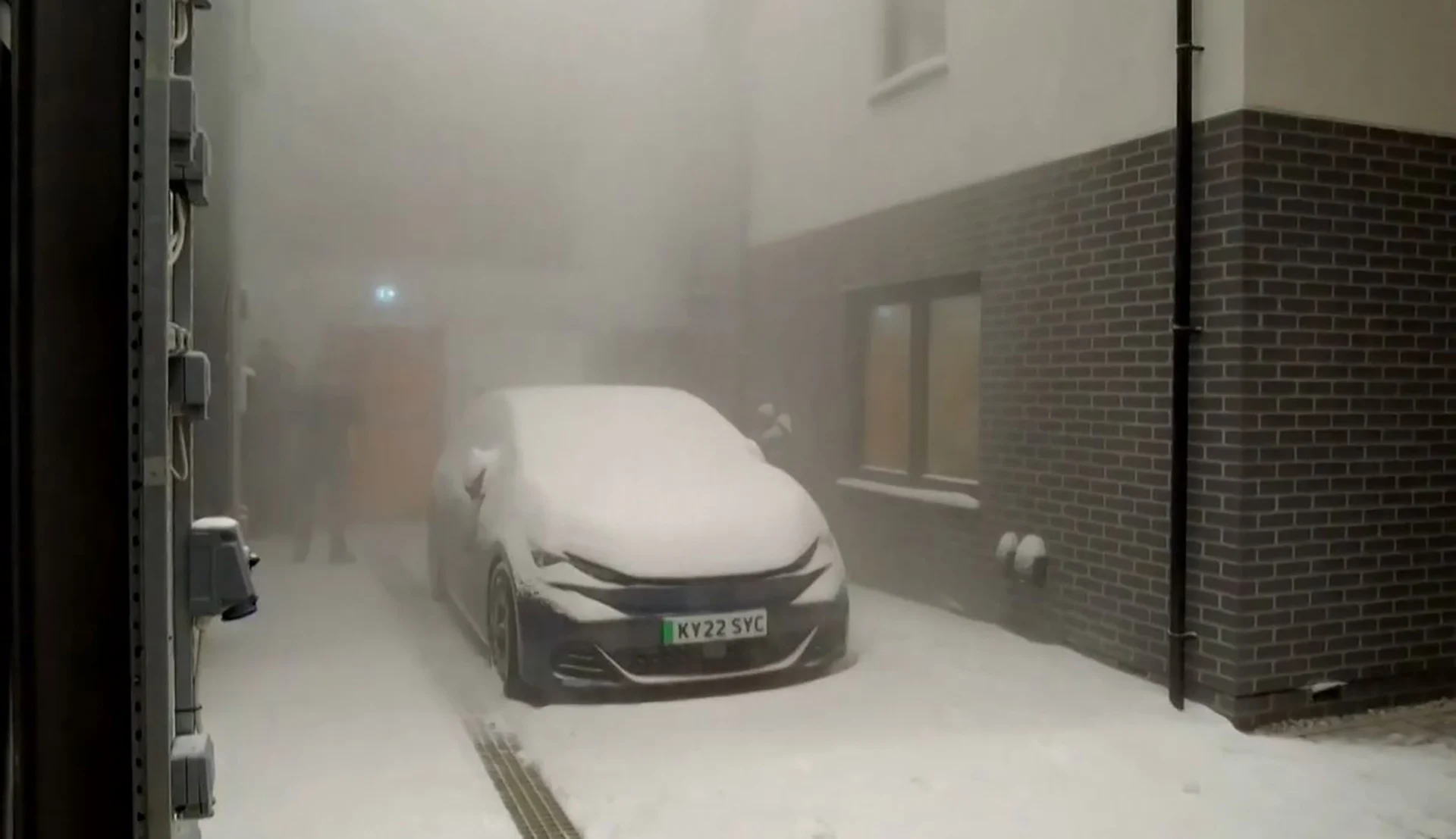
‘Homes of the future’ face extreme weather tests
Within a giant chamber big enough to hold 24 double-decker buses, researchers at Britain’s University of Salford are stress-testing two homes of the future under tightly controlled conditions.
"What we want to know is how buildings are going to perform now and in the future to achieve net zero energy efficiency," according to professor Will Swan, director of Energy House Laboratories at the University of Salford.
"We're standing in Energy House 2.0. and, essentially, it's two large environmental chambers where we can take the temperature down to -20 C, up to plus 40 C — wind, rain, snow, solar. And this helps us undertake repeatable experiments, which you can't do anywhere else in the world.
"The reason we've designed it is to really understand how houses are going to perform, not just now, but in future climates. So how can they perform against extreme weather events, extreme cold and extreme heat."
The $19-million project is partly funded by the European Regional Development Fund.
One of the houses was built in partnership with property developers Bellway Homes. The other with Barratt Developments and construction solutions manufacturer Saint-Gobain.
Professor Richard Fitton is in charge of reading the energy performance of the buildings, as they are subjected to conditions mimicking everything from nordic winters to Saharan summers.
"These two homes are looking to predict the future home standard, which comes in 2025. That will develop our need for renewables in houses. So air source heat pumps, for instance, are present in both of these buildings. But we're also looking at testing things like infrared heat systems, underfloor heating as well. So it's a big experiment really to find out what is the best for these particular types of houses," Fitton said.
The project’s main goal is to uncover the most effective ways to deliver zero carbon housing and to control running costs in homes, at a time when the cost of living and climate change weighs heavily on people’s lives.
"The climate is changing. We can all understand the climate is changing. It's not just going to get warmer, it's going to get more extreme. There's going to be things like drier summers, but wetter winters as well. So our goal here is to look at developing a way of testing these buildings to their extreme," Fitton said, adding "more importantly, when we put people inside them, how do they deal with it as well and what can we learn from that?"
Reporting by Ilan Rubens.
Thumbnail image: The home undergoes a stress test for extreme temperatures. (REUTERS).











